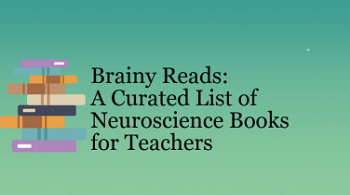May 1, 2018

Students’ availability for learning can be affected by many things, but we are learning more every day about the impact of mental health disorders on children’s classroom functioning. The National Survey of Children’s Health (http://www.nschdata.org/learn/NSCH) provides some initial population-based data about the mental health needs of U.S. children aged 3 – 17 years. Based on these results, 1 out of 7 children aged 2 to 8 years had a diagnosed mental, behavioral, or developmental disorder (MBDD), and of those ages 3-17, 3% had a current diagnosis of childhood anxiety and 2.1% had a current diagnosis of depression (https://www.cdc.gov/childrensmentalhealth/data.html). We know these rates are higher in children with various risk factors, including many of the students in our school classrooms, so Education Consultant Lisa Carey decided to dig a little deeper into this topic by speaking with Drs. Tanisha Drummond and Lisa Jacobson from the Department of Neuropsychology at the Kennedy Krieger Institute.
LC: What are the risk factors for developing depression in childhood or adolescence?
TD: We know that there are environmental stressors and genetic components. Stressors can include transitions, trauma, learning problems, or physical illness/ injuries. A risk factor for depression is having another mental or medical diagnosis, because they present added stressors on the child or adolescent. Genetic predispositions to mental health disorders may be paired with environmental factors.
LC: So when you mention genetics, if there is a family history of depression, does that mean that a child is going to have depression? Is it inevitable?
LJ: The studies that have examined this question suggest that having a genetic predisposition to mental health disorders paired with environmental factors is more likely to result in someone actually experiencing depression than either of those things alone, so family genetics alone is not a guarantee.
TD: We know from studies of identical twins that one twin can develop depression and the other twin may not, even though both twins are at risk due to their shared genetics.
LJ: One thing we need to consider is that while a child may have a genetic predisposition to depression, there is also a factor of resilience. Resilience is a very important characteristic in children’s outcomes. Researchers are very interested in learning more about this protective factor and there is a lot of research being done right now (though mostly in the area of trauma).
LC: What are the symptoms that teachers should be looking for in the classroom?
TD: For kids, the thing that really stands out as a symptom that can be different from adults is irritability. Younger children with depression can be agitated, irritable, and/or angry. I try to explain to parents that kids who are depressed are not always that mopey and sad kid. Some of them do have the sadness and crying you might expect from an older individual, but (in making a clinical diagnosis) I’m looking for irritability, agitation, as well as the anger that comes a lot with depression. Negative thinking is also very common; like “I’m not good enough, I’m not smart enough, this isn’t going to get better.” Those kinds of thoughts that teachers would be able to pick up on because often kids verbalize those feelings. Often, kids who are depressed don’t like doing the kinds of things they used to do. For example, they suddenly don’t like going to art anymore, even though they used to look forward to that class. All of a sudden they don’t like gym. Other common symptoms you might see in the classroom include excessive and out of place guilt, as well as indecisiveness.
LC: I think a lot of the behaviors associated with depression could be mistaken for defiance. Teachers can be quick to consider student behaviors to be either complaint or defiant, and I think we need to stop and think about the reasons behind student behaviors. I don’t think most teachers’ first thought is that this child is being defiant because they’re depressed, that’s certainly not what I would have thought prior to learning more about student mental health.
LJ: Yes, that’s definitely important. Another thing we might want to consider that teachers might observe is impacts on learning. Remember, for children to be available for learning, they need to be able to pay attention, keep themselves alert and focused, process information pretty quickly, and recall information pretty fluently. These are all things that depression can make difficult. A drop in academic ability could be a warning sign. Add in the anger or irritability, the loss of interest or pleasure, and some defiance, and you should consider talking to your school’s mental health provider, as well as the student’s parents.
LC: In the past, we’ve talked about how anxiety negatively impacts executive function, but you’re saying that depression does, too. That is important information.
LJ: Yes, and both anxiety and depression are neurobiological disorders. In other words, we know that there are changes or differences in how the brain functions in these individuals that provide the basis for the behavioral changes that we can see in depression. In fact, multiple brain regions are affected in depression. These changes can really disrupt other brain functions and related behavior, such as learning or executive function. For example, some research has found that the hippocampus, a structure important for learning and remembering new information, can be smaller in people experiencing high levels of stress and untreated depression.
TD: Another thing to keep in mind is that the symptoms we’ve mentioned also overlap with ADHD symptoms. There is a risk that kids could be misidentified as having ADHD, when they are really experiencing depression.
LJ: Another symptom is persistent fatigue. That tends to be more of a symptom for adolescents than children, but is also important for teachers to consider.
LC: So the high-schooler with their head down is someone who might have depression? But, there are a lot of reasons a teenager might put their head down in class. How do you figure out if depression is something that should be a concern?
TD: I’d think about frequency of the behavior and other related symptoms, like the ones that we’ve talked about. If it’s once in a while, maybe talk to that student about getting more sleep or consider that there might be some instructional reasons why their head is down. Maybe they have a headache. But, if it’s become a regular thing and it’s accompanied by other symptoms, it’s time to talk to the school psychologist or other mental health professionals available in your school.
LC: At what point do you think that teachers should reach out to parents? How should they do so? After all, we are not mental health providers.
TD: That is where having some behavioral data (even just some notes that you jot down daily) would be helpful. The data from your observations allow you to say, “Hey, this child usually participates, and now something has changed.”
There is a difference between calling home and saying, “I think your kid is depressed” (which you shouldn’t do) and saying, “I’ve noticed some changes in your child and I am concerned”. I think that in general, any time you have concerns about a student, using the approach of describing the behaviors you’ve observed without labeling them works much better. This approach allows you to better start a dialog that allows for ongoing communication. Sometimes parents might be less willing to talk to you about what’s going on, but at least you’ve alerted them to be on the lookout for other changes.
LC: How can teachers be supportive of students with depression?
TD & LJ:
- Understanding the symptoms and understanding that depression in kids can look different from what we sometimes expect from adults.
- Keeping open communication with the other adults responsible for supporting that student is also helpful.
- Talking to their parents, the mental health providers in your school, and other teachers in your school as necessary.
- Keeping things consistent and having routines that can engage the student, even if they don’t really feel like engaging can be helpful.
- Being flexible and responsive to the student’s needs. Maybe there are days during which, backing off might be helpful. Maybe they need a bit more encouragement or the opportunity to do things a bit differently. (You may need help from a mental health professional to determine how to know when to reduce demands and when to keep the schedule the same.)
- Keep the number for your city/county’s helpline for depression or self-harm/suicidality handy and don’t hesitate to reach out to your building or district mental health staff for assistance!
References:
- National Survey of Children’s Health: https://www.nschdata.org/learn/NSCH
- CDC: https://www.cdc.gov/childrensmentalhealth/data.html
- NIMH: https://www.nimh.nih.gov/health/publications/teen-depression/index.shtml















